In my first post on this topic, I looked at roadsters in their original concept: simple, economical fun. Today I’m going to look at a development of the concept, which added performance — mostly, it should be said, in terms of speed, but also comfort: bigger, better suspension and so on, all at (of course) a steeper price.
It began almost at the same time as MG were bringing out their early TA model, when the SS Motor Company (later Jaguar) produced their SS Jaguar 100 model, which unlike the earlier Mercedes SSK was designed not for the track but for touring.
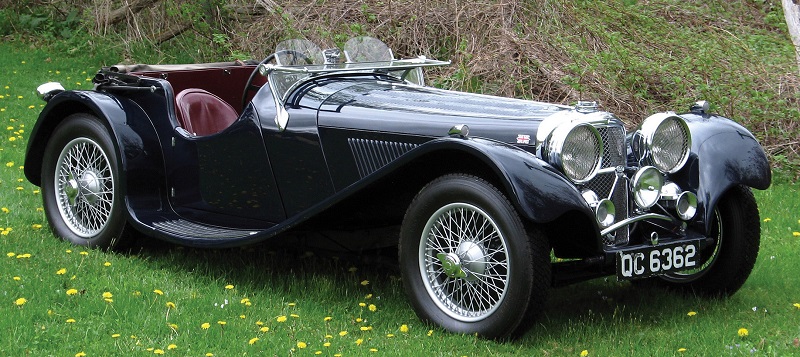
It had a brute of an engine (3.0-liter inline six-cylinder, compared to the TA’s 1.3-liter four-banger) and a top speed of just over 100mph. The popularity of these cars, by the way, can be seen by the fact that almost every one you see nowadays is a replica, not a rebuilt original.
Of course, these cars could be raced, and they were. Sports car racing was big at the time, so there were all sorts of cars like this: Bentley, Mercedes, Alfa Romeo (to name but some) all had a hand in the game, and in the U.S., there were Duesenbergs, Cords and Auburn (to name but some of them).
I’m not a fan of big, brute cars; I prefer the smaller touring models to the racers: modestly sized but still with decent performance. Hence I tend to prefer the SS 100’s successor, the exquisite Jaguar XK 120:

I also prefer the smaller German models like the later 190 SL:
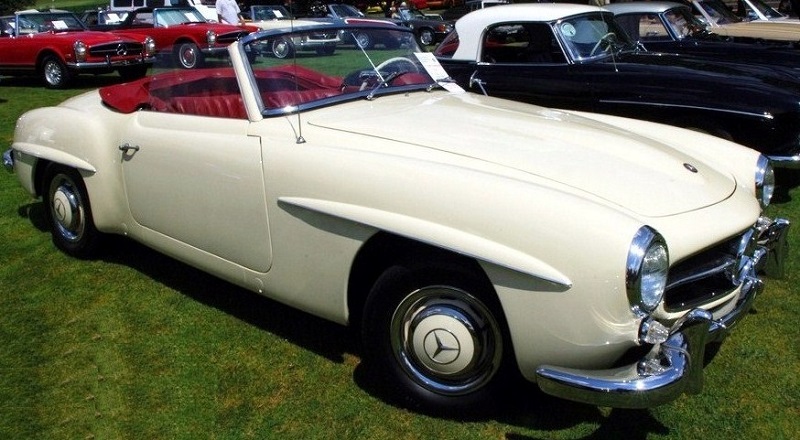
…which is really the budget version of racing monsters like the 300 SL Gullwing.
In the U.K. again, the little MGA sports car begat the Austin-Healey with its powerful 3-liter engine (but with the same legendary unreliability of its smaller cousin):
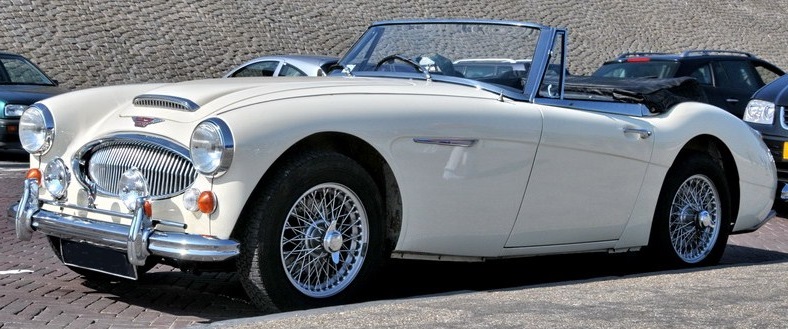
Now on to the present, or rather, the recent present. One of the problems of car manufacturing is that it’s so damn expensive. Only large corporations can build cars profitably, because of both economies of scale and the fact that they can subsidize their more interesting (and less popular) models with mass-market versions. And sadly, performance touring cars are a niche market. Even BMW can keep their excellent 650 touring models in production only because they sell boatloads of 330s, 530s and 750s.
And with a lovely segue, we come upon Wiesmann touring sports cars. Started by the two eponymous brothers in the late 1980s, Wiesmann produced what I think are some of the most beautiful cars made in the modern era. Here’s their MF-3, which uses a BMW M3 3-liter 6-cyinder engine:
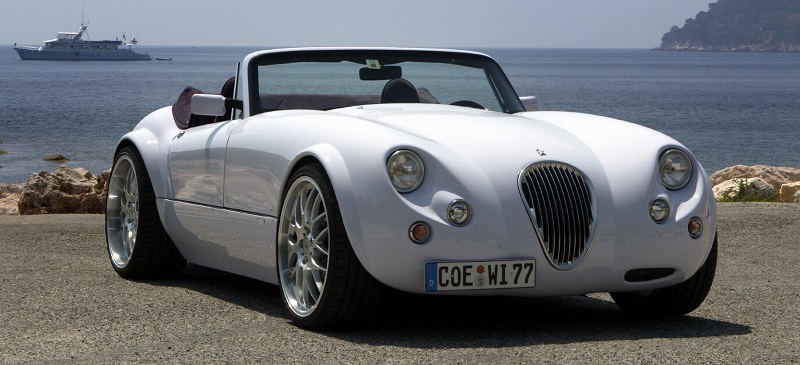
…and if you’re thinking that it looks rather like the Jaguar XK 120 above, you’d be correct. Unlike the older XK, though, which had a spartan interior, Wiesmann gave the lucky driver this cockpit to play in:
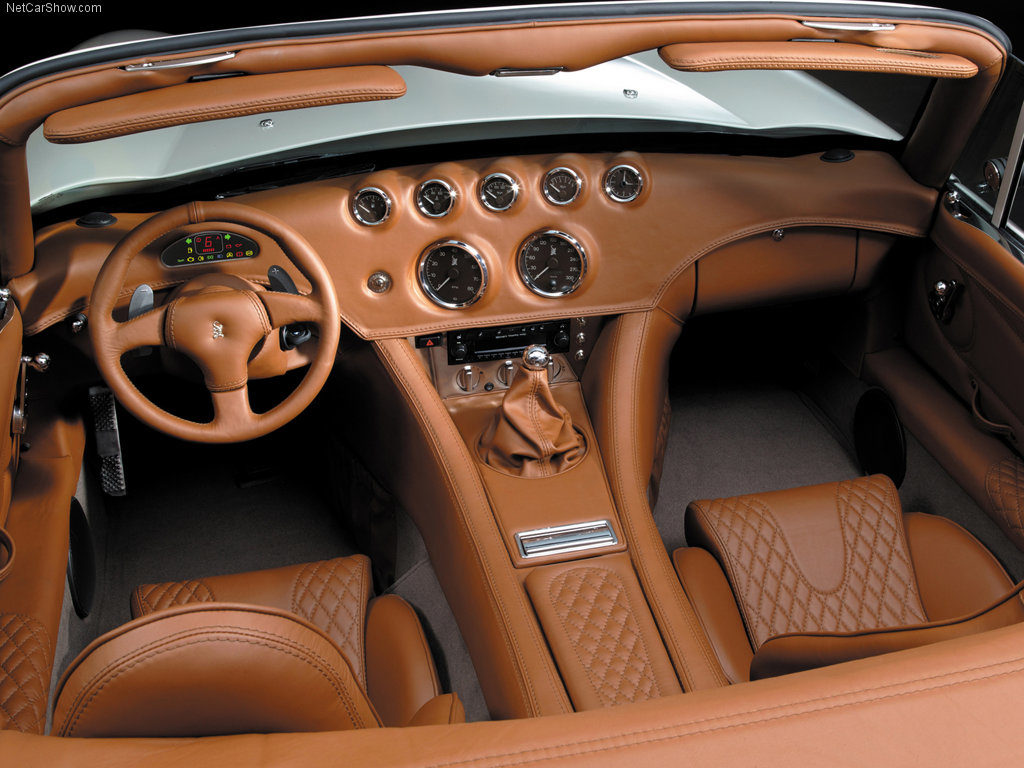
Note the manual transmission, which is the default offering (you could get an automatic gearbox, but that would be a gross betrayal).
Later versions had the monster 4.4-liter BMW engines, which didn’t add that much power, but did turn an already-expensive proposition into an exorbitant one — which limited their market.
Sadly, Wiesmann went out of business in 2014, because their cars required too much money to convert them into US roadworthiness and the high (hand-built) cost limited their European market — these are people who want to tour, not race, so you’re not going to get the Ferrari-Porsche Set to buy one.
The same can be said for Aston Martin cars, by the way:
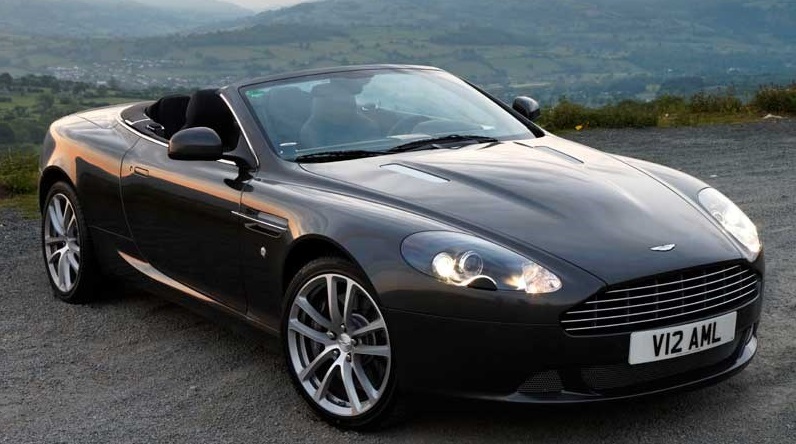
They’re ridiculously expensive and yet (still) a little too unreliable for people who want to (say) drive from San Diego to Maine, or Free Market Towers to Naples.
But because Aston Martin is a British company, they will always have wealthy customers in the UK who don’t want to drive a European (read: German) car, and who also don’t mind a little bit of unreliability because remember: one shouldn’t have too much fun while enjoying oneself.

In the 1980s an elderly German crony of my dad was selling his 190SL. It had been his wife’s car, she had died, the old gent wanted it gone, and fast.
It was perfectly maintained and was going for a song. Dad encouraged me to buy it. I refused.
Idiot, idiot, thrice an idiot.
One of the problems over here is the variable weather which, of course, reduces the market for such cars even further. But they’re gorgeous and one can enjoy them vicariously.
> Only large corporations can build cars profitably, because of both economies of scale
> and the fact that they can subsidize their more interesting (and less popular) models
> with mass-market versions.
The real constraint is regulation an paperwork. Designing and building a nice car isn’t tough, but you’ve got:
1) Federal Emissions standards.
2) NHSTA safety standards
3) California Emissions standards (and with it being the most populous state AND over 10 percent of the legal population…)
4) OSHA
5) IRS
6) Etc.
Then yeah, you have to have the economy of scale to be able to afford the lawyers and bureaucrats, and the bribes to the parasites.
I guess we have to have *some* government standards, but bah.
Firstwife had a 190SL. As her father said, sitting down in the driver’s seat is like putting on an old pair of shoes.
But it definitely could have used a bit more motor, particularly when one considers entry onto an Interstate. It was not a lightweight car.
I once had a 1956 Austin-Healey LeMans. Fun, with the drop-down windshield and the leather belt across the louvered hood. Later, a 1961 3000 4-seater–which soon enjoyed a Corvette motor and transmission and was far more reliable.
There are no BMW M3s with V6 engines. Only in-line 4s and 6s, and V8s.
Yeah, sorry. I meant to write “6-cylinder” not V6. Duly changed. [/Orwell]
Aston’s reliability is on par with any other exotic marque these days– has been for a good decade now. You really don’t want to screw around with an original Vanquish or earlier, unless you’re at least partly insane, but everything since the late ’00s has been pretty solid.
Ford saved that company in many ways. Getting them to finally put two cars together the same way was as important as bailing them out financially.
Where (if anywhere) does the Lotus Seven (now Caterham Seven) fit? If I ever decided to have a midlife crisis, I’d get one of those (I’d also get an American brute to take to the drag strip, like a ’64 Impala SS or a ’71 V8 Plymouth Duster). The only problem is I believe every state in the Union already has some wiseacre who snagged license plate KAR 120C.
The Caterham is race-track fun. It’s not really an open-road car.
The roadster that floats my boat is the Morgan three-wheeler. If only I could fit in it.
I was owned by a Jaguar XK 120 M Drop Head Coupe for over 25 years, just sold it about a year ago.
It had been in the family since 1960. They are a beautiful car to look at or to hear them at full song.
But they are heavy (3200 lb) and quite warm in the summer and just as cold in the winter.
Mine was a real driver. We attended as spectators races at Watkins Glen, Bridgehampton, Lime Rock &
Sebring. Plus many more events, tours, rallies, etc. Sold it when the arthritis became so bad that I no
longer could maintain it myself. By modern standards it was not very fast, but it still would top out at a bit over 120 mph. (5400 rpm in top gear) I miss is occasionally.